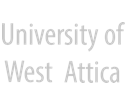Reconstructing Orientation Field from Fingerprint: Minutiae to Improve Minutiae-Matching Accuracy
Abstract
Among all the biometric techniques, fingerprint-based identification is the oldest method which has been successfully used in numerous applications. Everyone is known to have unique, immutable fingerprints. A fingerprint is made of a series of ridges and furrows on the surface of the finger. The uniqueness of a fingerprint can be determined by the pattern of ridges and furrows as well as the minutiae points. Minutiae points are local ridge characteristics that occur at either a ridge bifurcation or a ridge ending. Minutiae are very important features for fingerprint representation, and most practical fingerprint recognition systems only store the minutiae template in the database for further usage. The conventional methods to utilize minutiae information are treating it as a point set and finding the matched points from different minutiae sets. In this virtual minutiae is used for fingerprint recognition, in which the fingerprint’s orientation field is reconstructed from virtual minutiae and further utilized in the matching stage to enhance the system’s performance. A decision fusion scheme is used to combine the reconstructed orientation field matching with conventional minutiae based matching. Since orientation field is an important global feature of fingerprints, the proposed method can obtain better results than conventional methods. In our paper it is implemented using ‘MATLAB’ and considering the virtual minutiae
Keywords
Biometric techniques, immutable fingerprints, Minutiae, recognition system, conventional methods, decision fusion scheme
DOI: 10.26265/e-jst.v5i5.661
Refbacks
- There are currently no refbacks.






